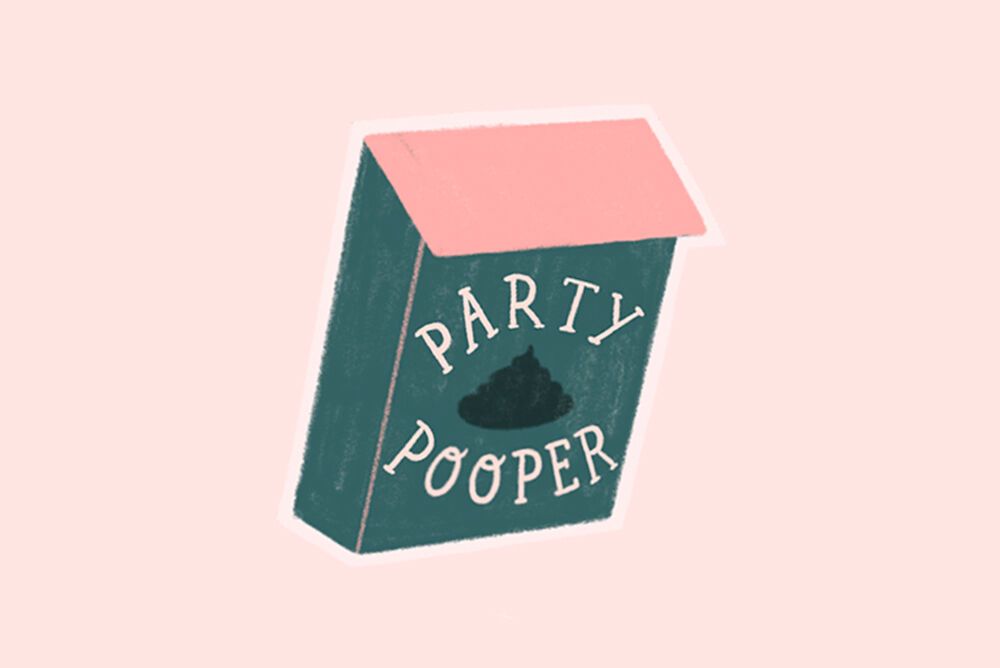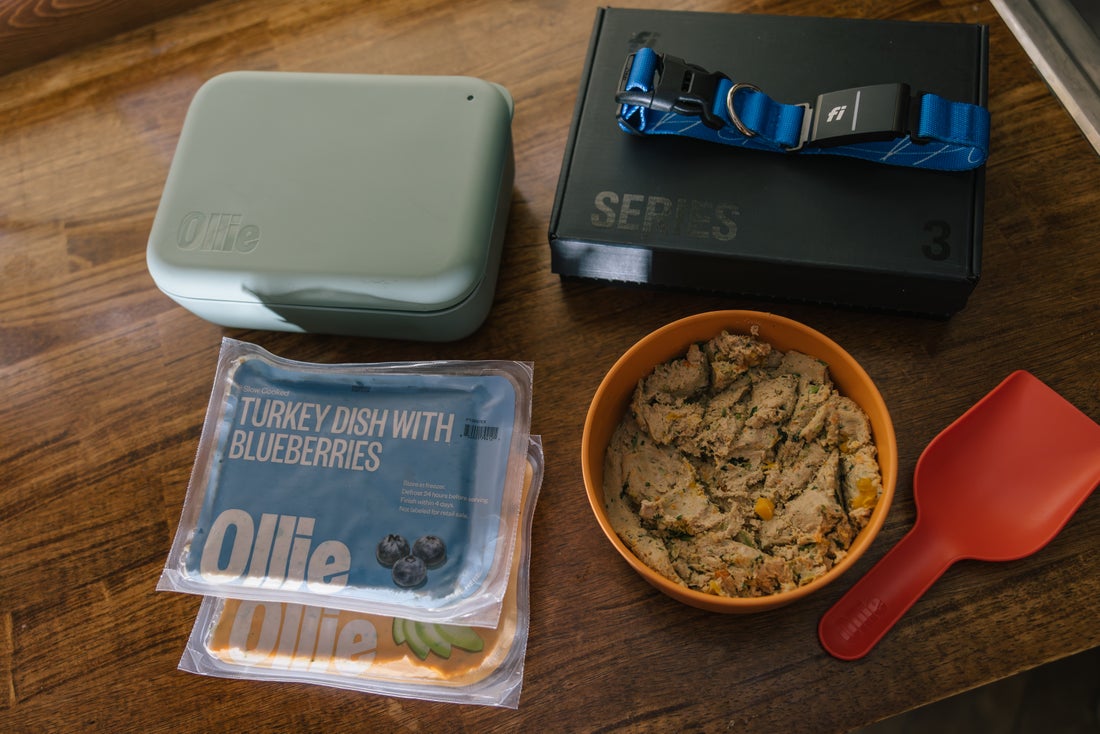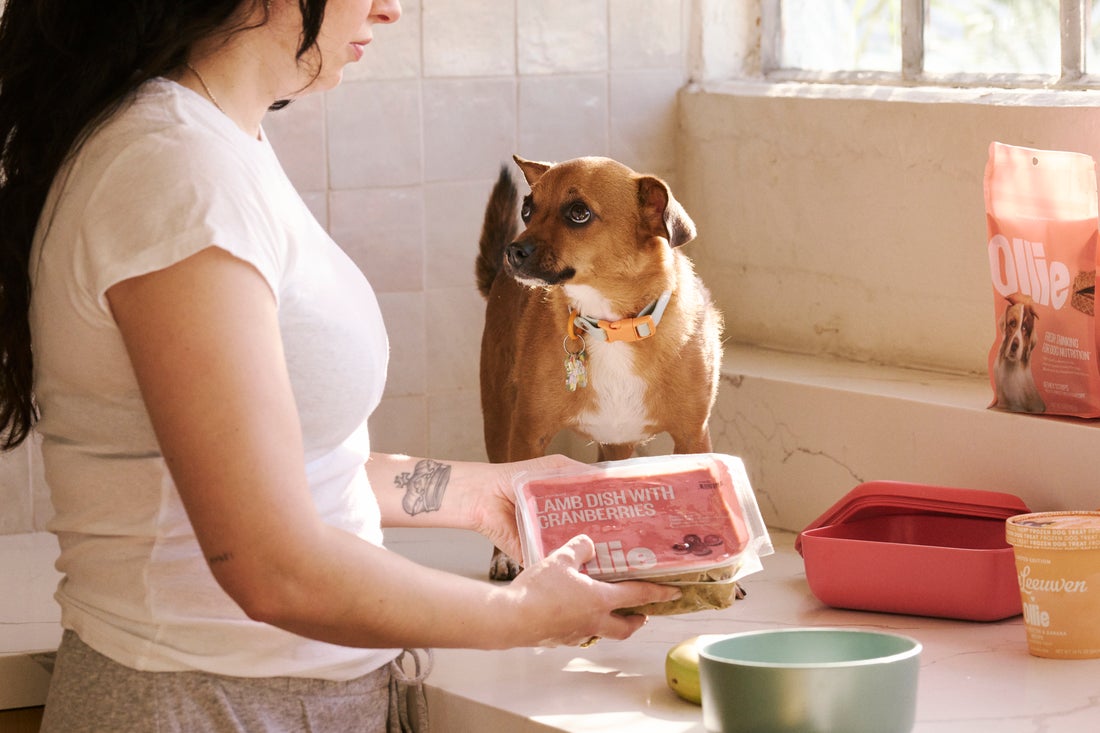Hey Ollie blog readers! We’re offering you an exclusive 60% OFF your starter box! Try now!
There are few hotter topics among dog parents than poop. Maybe it’s our hands-on experience with our dogs’ poops, or maybe it’s because their bowel movements are a key insight into the overall health of our pups. While regular wellness checks by a vet are a must, keeping an eye on your dog’s poop shape, consistency, and color can help you spot problems or progress with their digestive health. Read on to learn what your pup’s poop might be trying to tell you!
Is your pup’s poop in good shape?
Take these cues from your pup’s number twos to get a sense of what needs to change in their diet and what is right on track.

Hard lumps
Dry, pellet-like lumps are typically a sign of severe constipation. Even if your pup isn’t straining to pass these poops, it could still be a sign of dehydration, so keep tabs on their water intake. While this isn’t necessarily a cause for concern if dry poops become the norm consider switching your dog to a food with higher moisture content. Ollie’s freshly cooked food retains the natural moisture from whole meats, fruits, and vegetables, making it easier to keep pups hydrated beyond the water bowl.

Runny liquid
If you find yourself needing a mop to clean up after your pup, they most definitely have diarrhea. While diarrhea in dogs is common and typically a reaction to a change in their diet, it can also be a symptom of other underlying health issues and shouldn’t be dismissed if accompanied by other new behavior or persists even after your pup is put on a bland diet.

Mushy mounds
Poops that straddle the line between liquids and solids may also be an indication of mild diarrhea. Now’s the time to inventory everything in your pup’s diet—any new treats, supplements, or table scraps being added to their menu? If so, this is a good time to cut out any offenders before it makes a bigger mess of your pup’s digestive health.

Soft blobs
Small, soft stools with clear edges may seem completely normal to the untrained eye, but these loose poops could mean your pup isn’t getting enough fiber. Dietary fiber is found in familiar foods like sweet potatoes, pumpkin, carrots, and brown rice, and helps maintain gut health for dogs and humans alike. When properly balanced, fiber also plays a major role in moving things along in your pup’s digestive tract, keeping both constipation and diarrhea at bay.

Compact sausages
Dense, firm, but not dry poops are the gold standard of dog number twos. When switching to Ollie’s fresh, human-grade dog food, one of the first things pup parents notice is that their dogs poop in smaller amounts, less frequently. While this can be alarming at first, particularly when transitioning from processed kibble, smaller, compact poops are actually a sign that your pup is properly digesting and absorbing nutrients from their food. Since they’re absorbing more, less waste is excreted, and therefore your pup’s stools will appear more consistent in size and texture.

A colorful guide to your pup’s poop
Aside from size, shape, and consistency, color is another thing to keep in mind when scooping your pup’s poop. Normal, healthy stools should be within the light to dark brown spectrum—ideally, the color of milk chocolate. If your pup’s poop is anything other than brown, here’s what could be going on:
Green
Noticeably green stools could indicate that a dog has been eating a lot of grass or other plants. While this may not be an immediate cause for concern if unaccompanied by other symptoms such as vomiting, excessive grass-eating is often a sign of anxiety or intestinal distress. A more serious cause of green poop is gallbladder issues, so unless you’ve witnessed your pup mowing down on grass, don’t let too much time pass before talking to your vet.
Orange or yellow
Anything in the orange or yellow spectrum could be a sign that something is up with your pup’s liver or pancreas. See a vet as soon as you can.
Red
Unless you’re feeding your pup beets, red stools generally mean blood is present. Red blood is usually a sign of external bleeding, and inspecting your pup for cuts or tears can help you get to the bottom of the bleeding. If no visible lacerations are visible, your vet may need to do a more thorough examination to determine the cause.
Black and tarry
If your pup’s poop appears all black, contact your vet immediately. Black and/or tarry stools could be a sign of internal bleeding, which requires urgent care.
White spots
Small, white spots in your pup’s poop about the size of a grain of rice could be one of the first signs of tapeworms. Work with your vet to get treatment to prevent further harm to your pup or other pets in your household.
White and chalky
Leave this shade of poop for the birds. White, chalky stools are usually caused by an excess of calcium or other minerals your pup is no longer absorbing. This is a common experience for dogs being fed raw diets, particularly those not nutritionally balanced.
Overall, our pup’s poop patterns can tell us more than they can about what’s going on inside their furry bodies. You can avoid false alarms by feeding your pup a healthy, balanced diet free from synthetic dyes, preservatives, and artificial flavors. At Ollie, we only use fresh, whole meat, fruits, and vegetables in our human-grade recipes and balance them according to your pup’s nutritional needs so they get everything they need to thrive and nothing they don’t.
The Ollie blog is devoted to helping pet parents lead healthier lives with their pups. If you want to learn more about our fresh, human-grade food, check out MyOllie.com.
Tagged As:

The nutrition your dog needs,
the food they want.

Enjoying our articles? Subscribe our Newsletters and get new articles directly to your inbox
You might also like
18 September 2025
5 MINS READ
Can I Rotate Fresh Dog Food Flavors?
Yes, it’s safe to rotate fresh dog food flavors, and many dogs actually benefit from the variety. At Ollie, we offer multiple fresh recipes, like Beef, Chicken, Turkey, Lamb, and Pork so you can…
by Ollie Pets
18 September 2025
5 MINS READ
Is Fresh Dog Food Safe During Power Outages?
Fresh dog food is only safe during a power outage if it has stayed cold, specifically, below 40°F. Once the temperature rises above that point, bacteria can start to grow, and the food may no lon…
by Ollie Pets
18 September 2025
5 MINS READ
How Do I Store Fresh Dog Food While Traveling?
If you’re bringing fresh dog food on the road, keeping it cold is key. The best way to store it is in a cooler with ice packs or a travel freezer. At Ollie, our vacuum-sealed fresh food stays good…
by Ollie Pets







